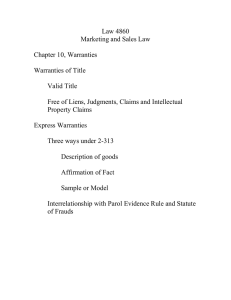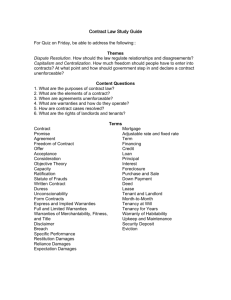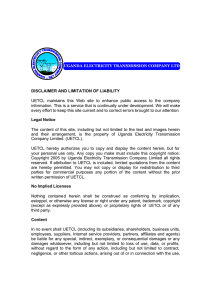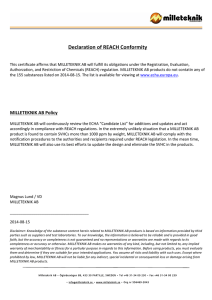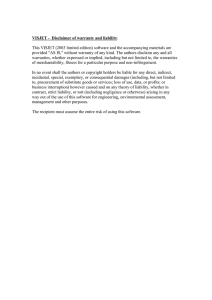Implied Warranties of Fitness and Merchantability: They Don`t Just
advertisement
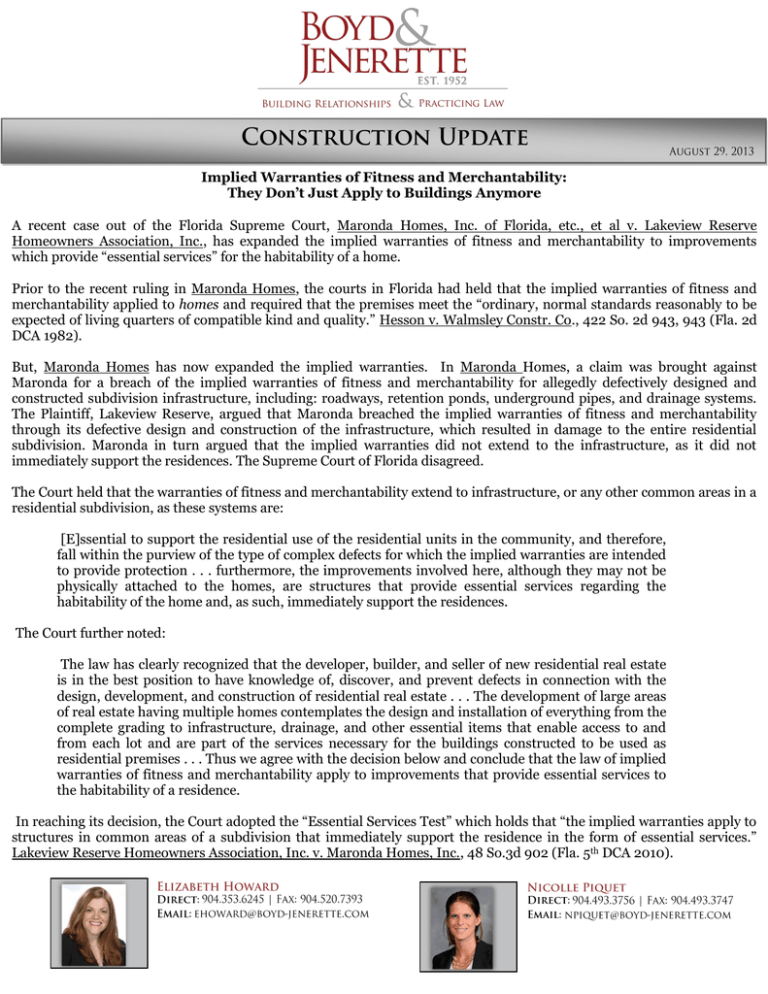
Implied Warranties of Fitness and Merchantability: They Don’t Just Apply to Buildings Anymore A recent case out of the Florida Supreme Court, Maronda Homes, Inc. of Florida, etc., et al v. Lakeview Reserve Homeowners Association, Inc., has expanded the implied warranties of fitness and merchantability to improvements which provide “essential services” for the habitability of a home. Prior to the recent ruling in Maronda Homes, the courts in Florida had held that the implied warranties of fitness and merchantability applied to homes and required that the premises meet the “ordinary, normal standards reasonably to be expected of living quarters of compatible kind and quality.” Hesson v. Walmsley Constr. Co., 422 So. 2d 943, 943 (Fla. 2d DCA 1982). But, Maronda Homes has now expanded the implied warranties. In Maronda Homes, a claim was brought against Maronda for a breach of the implied warranties of fitness and merchantability for allegedly defectively designed and constructed subdivision infrastructure, including: roadways, retention ponds, underground pipes, and drainage systems. The Plaintiff, Lakeview Reserve, argued that Maronda breached the implied warranties of fitness and merchantability through its defective design and construction of the infrastructure, which resulted in damage to the entire residential subdivision. Maronda in turn argued that the implied warranties did not extend to the infrastructure, as it did not immediately support the residences. The Supreme Court of Florida disagreed. The Court held that the warranties of fitness and merchantability extend to infrastructure, or any other common areas in a residential subdivision, as these systems are: [E]ssential to support the residential use of the residential units in the community, and therefore, fall within the purview of the type of complex defects for which the implied warranties are intended to provide protection . . . furthermore, the improvements involved here, although they may not be physically attached to the homes, are structures that provide essential services regarding the habitability of the home and, as such, immediately support the residences. The Court further noted: The law has clearly recognized that the developer, builder, and seller of new residential real estate is in the best position to have knowledge of, discover, and prevent defects in connection with the design, development, and construction of residential real estate . . . The development of large areas of real estate having multiple homes contemplates the design and installation of everything from the complete grading to infrastructure, drainage, and other essential items that enable access to and from each lot and are part of the services necessary for the buildings constructed to be used as residential premises . . . Thus we agree with the decision below and conclude that the law of implied warranties of fitness and merchantability apply to improvements that provide essential services to the habitability of a residence. In reaching its decision, the Court adopted the “Essential Services Test” which holds that “the implied warranties apply to structures in common areas of a subdivision that immediately support the residence in the form of essential services.” Lakeview Reserve Homeowners Association, Inc. v. Maronda Homes, Inc., 48 So.3d 902 (Fla. 5th DCA 2010).
